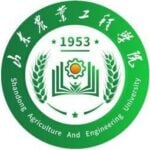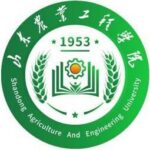
Shandong Agriculture and Engineering University
About Company
Shandong Agriculture and Engineering University (山东农业工程学院, website) is a public general undergraduate college approved by the Ministry of Education. The school’s predecessor was the “May 7th” Cadre School in Shandong Province, which was established in June 1971. It passed through the “May 7th” Cadre School in Shandong Province, the Shandong Provincial Agriculture and Forestry Cadre School, and the Shandong Academy of Agricultural Management Cadres. Shandong Agricultural Engineering College has two campuses, Jinan and Qihe, covering an area of 2,671 acres.
Shandong Agriculture and Engineering University currently has 28 undergraduate majors and 20 junior college majors, covering 6 disciplines including engineering, agriculture, management, economics, literature, and art. It has formed engineering as its main body and agricultural engineering as its feature. The discipline and professional system serving modern agriculture as the main line and multi-disciplinary coordinated development currently has 12,630 full-time regular college students. The school has been identified by the National Civil Service Bureau as the first batch of “National Civil Service Civilian Characteristic Practical Education Bases”, and has been approved by the Ministry of Agriculture and Rural Affairs as a national model base for the cultivation of new professional farmers. It undertakes civil servants at the eastern and western parts of the country, county-level agricultural leaders, and new farmers. Training tasks, training more than 3,000 people at all levels and various types of personnel each year.
Shandong Agriculture and Engineering University has the School of Food Science and Engineering, the School of Mechanical and Electronic Engineering, the School of Information Science and Engineering, the School of Land Resources and Surveying Engineering, the School of Resources and Environmental Engineering, the College of Agricultural Science and Technology, the School of Economics and Management, the School of Business, the School of Humanities, There are 15 secondary colleges (departments) including the School of Art, the School of Marxism, the Teaching Department of Basic Courses, the School of Cadre Studies, and the School of Continuing Education. At present, there are 523 full-time teachers, including 164 teachers with senior professional titles, 463 teachers with master’s degrees or higher, 2 academicians of the Academy of Engineering, 2 experts who enjoy special government allowances from the State Council, 1 backbone teacher from the Ministry of Education, and 1 provincial teacher. 7 provincial outstanding teachers, 2 experts from the Shandong Agricultural Experts Advisory Group, 3 experts from the Shandong modern agricultural industry technology system, 1 expert from the “653 Project” in the Shandong agricultural field, and 3 advanced individuals from science and technology in Shandong Province name. There are 83 laboratories and training centers, an ecological park covering an area of 500 acres, teaching and scientific instruments and equipment totaling more than 64 million yuan, the library holds 890,000 paper books, and has 109 internship teaching bases.
Shandong Agriculture and Engineering University currently has 1 national-level teaching reform pilot program, 1 national-level “gold course” virtual simulation experimental teaching program, 68 Ministry of Education industry-academia collaborative education programs, and 1 provincial-level high-level application. Specialized project construction professional group, 9 provincial education reform pilots and characteristic majors, 1 provincial applied talent training and development support plan major, 22 provincial excellent courses, won 2 first prizes of provincial teaching achievements, 2 and 3 9 prizes. In the past five years, students have won more than 430 provincial or higher awards in national and provincial discipline competitions such as mathematical modeling for college students, and student associations have won 84 outstanding achievements in national campus culture construction.
Shandong Agriculture and Engineering University has 1 academician workstation, 3 provincial engineering technology research centers, 2 provincial collaborative innovation centers, 2 Shandong provincial university key laboratories, Qilu Rural Rejuvenation Research Institute, and agricultural and forestry big data 8 research institutes including Engineering Technology Research Center, Agricultural Internet of Things Innovation Research Institute, Cotton Innovation Research Institute, Food Science Research Institute. In the past two years, the school has successively hosted major scientific research projects such as major national science and technology projects and major science and technology innovation projects in Shandong Province. In the past five years, the school has undertaken 16 national projects, 118 provincial and ministerial projects, formulated 21 national or local standards, won 1 second prize of the National Science and Technology Progress Award, and 1 first prize of the National Business Science and Technology Progress Award. 8 provincial and ministerial science and technology awards.
Shandong Agriculture and Engineering University has established friendly cooperative relations with universities in the United States, Britain, Australia, South Korea and other countries and Taiwan. The University fully implements the Party’s education work policy, closely focuses on the fundamental task of establishing people, and actively serves the rural rejuvenation strategy and major projects for the conversion of new and old kinetic energy. The strategy is committed to cultivating modern agricultural engineers and beautiful rural designers with firm ideals and convictions, a solid theoretical foundation, good engineering literacy, and outstanding practical ability. The school is an outstanding college for moral education in Shandong Province, and an advanced collective of science and technology for agriculture in Shandong Province.



